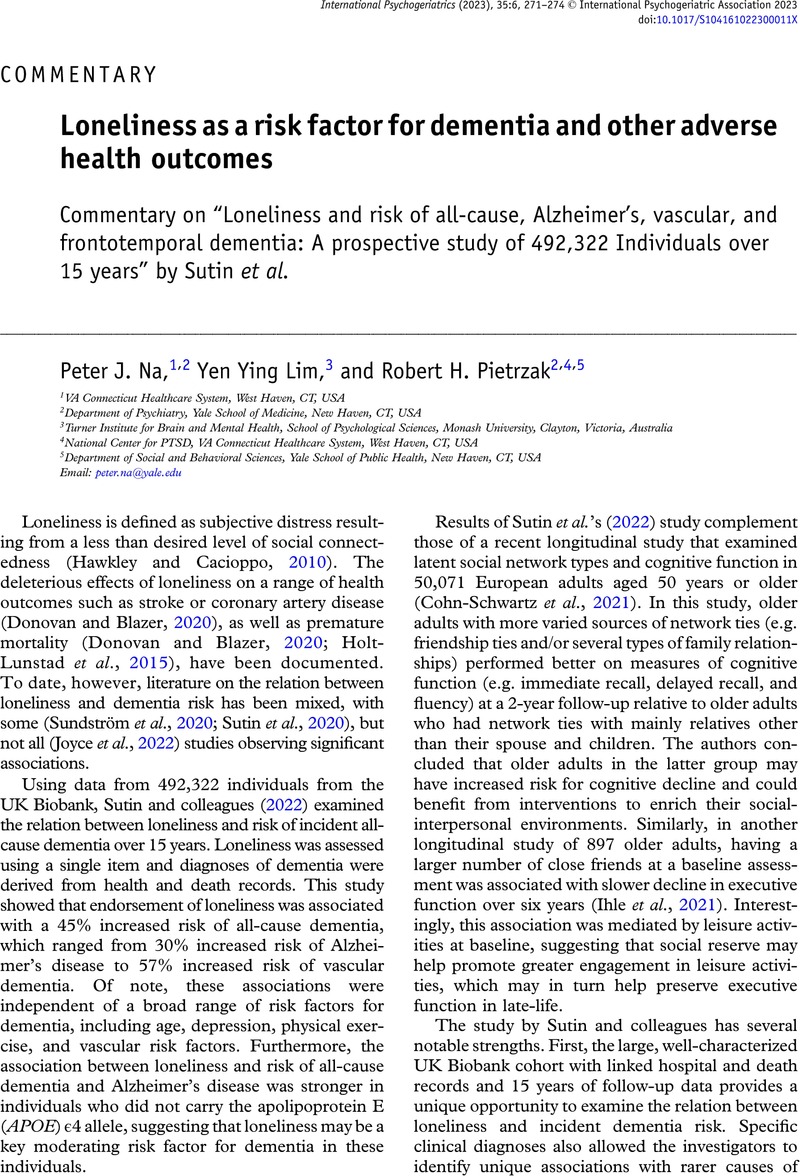No CrossRef data available.
Commentary on “Loneliness and risk of all-cause, Alzheimer’s, vascular, and frontotemporal dementia: A prospective study of 492,322 Individuals over 15 years” by Sutin et al.
Published online by Cambridge University Press: 03 February 2023
